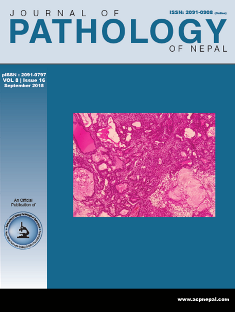Prevalence of dry eyes syndrome and retinopathy in diabetic patients and the association of glycosylated hemoglobin with retinopathy
DOI:
https://doi.org/10.3126/jpn.v8i2.20887Keywords:
Dry eye, Diabetes, Eyes, HbA1C, Retinopathy, Tear film break up timeAbstract
Background: Diabetes is one of the most common leading causes of blindness in 20–74 year old persons. Recently, problems involving the ocular surface, dry eyes in particular, have been reported in diabetic patients. This study was performed to assess the prevalence of dry eyes syndrome and diabetic retinopathy and its association with HbA1c in diabetic patients.
Materials and Methods: All the diabetic patients referred to Eye OPD were consecutively selected during the study period of three years. All the subjects were assessed by developed questionnaire; complete eye examination and Tear Film break up time (TBUT) test and Schirmer’s test. HbA1c was performed in all patients as advised by the physician and was entered in our records.
Results: Of 304 subjects, 165 patients (54.3%) suffered from dry eyes syndrome. Although dry eyes syndrome was more common in female patients, this association was not significant. Diabetic Retinopathy was found in 154 patients (50.65%). Dry eyes syndrome was more frequent in diabetic patients with diabetic retinopathy. (P = 0.02). Compared with patients without diabetic retinopathy, those with diabetic retinopathy were more likely to have higher HbA1c (p<0.001).
Conclusion: Diabetic retinopathy and dry eyes appear to have a common association like ageing. Examination for dry eyes should be an integral part of the assessment of diabetic eye disease. In addition, high HbA1c level was an important factor associated with prevalence of Diabetic Retinopathy.
Downloads
Downloads
Published
How to Cite
Issue
Section
License
This license enables reusers to distribute, remix, adapt, and build upon the material in any medium or format, so long as attribution is given to the creator. The license allows for commercial use.




